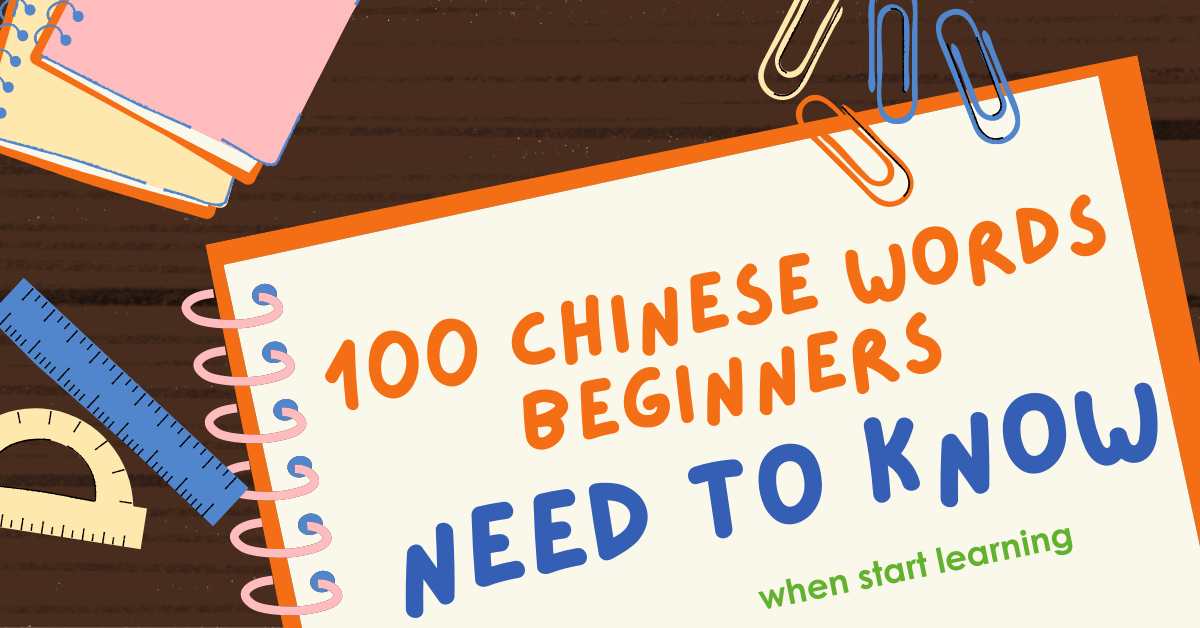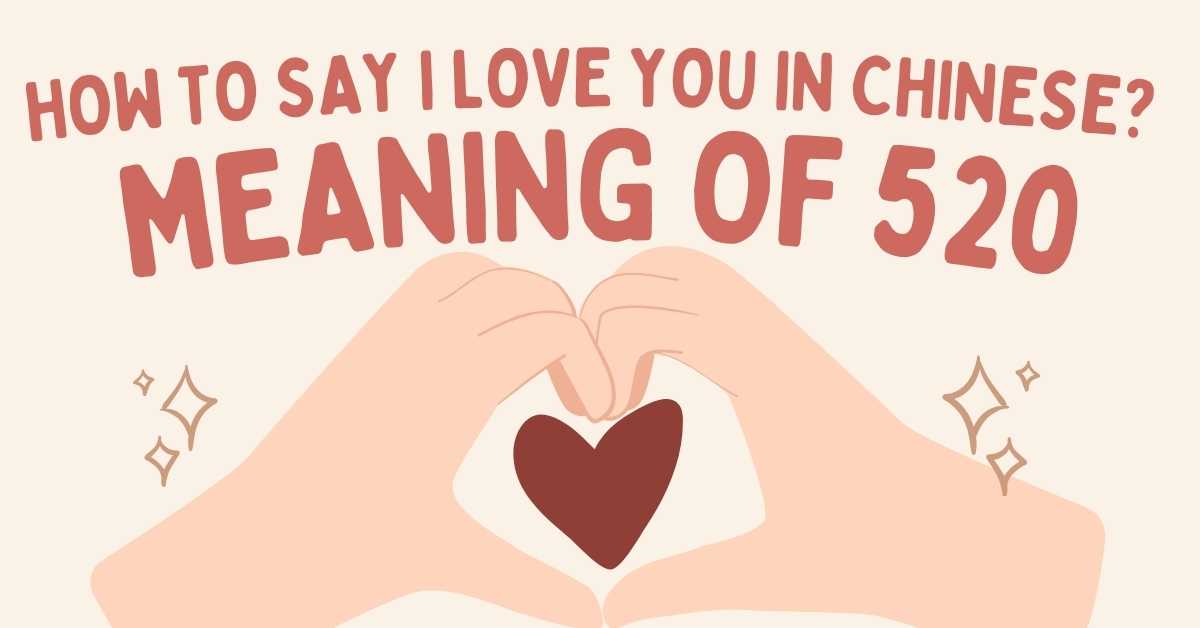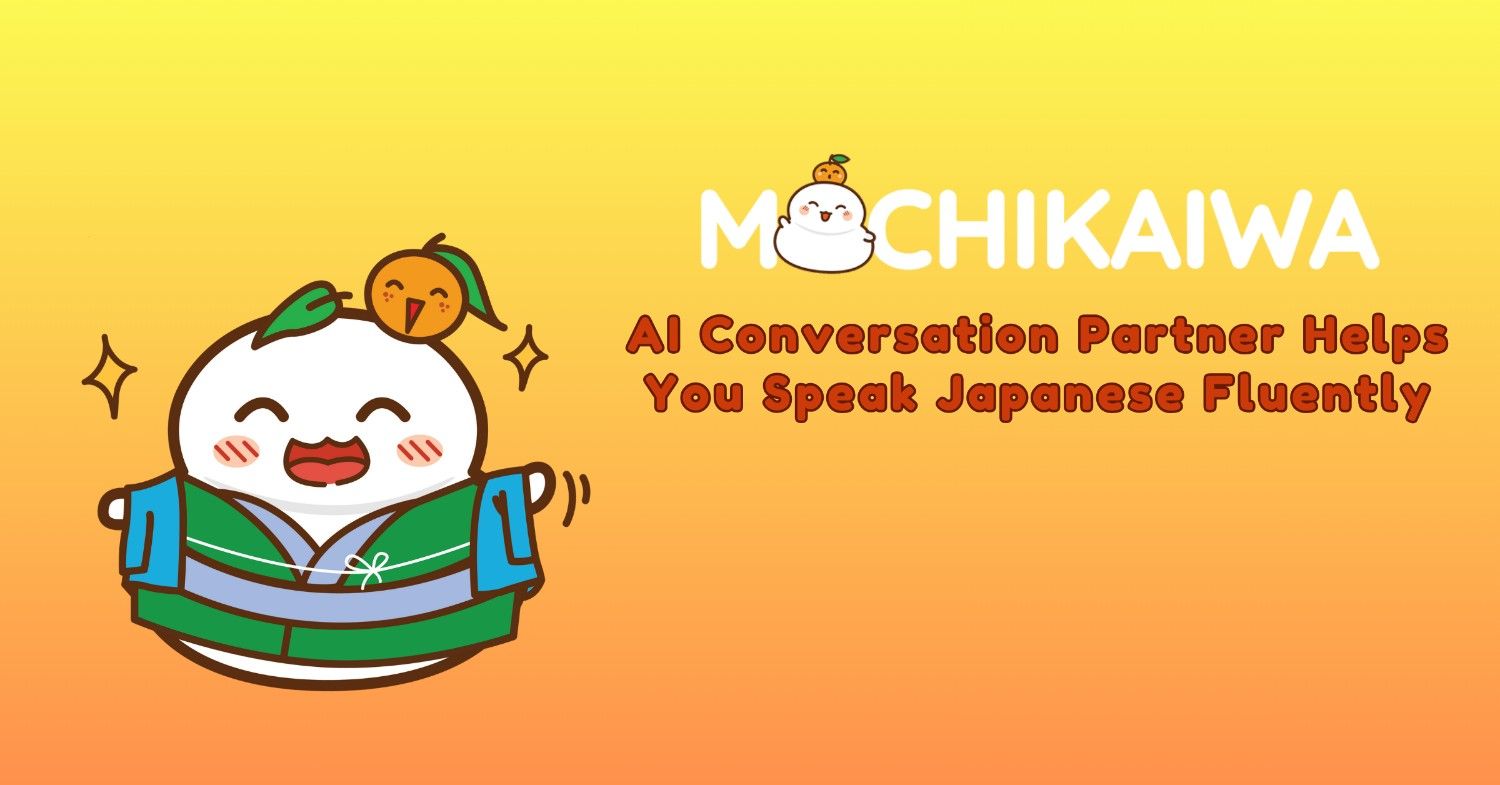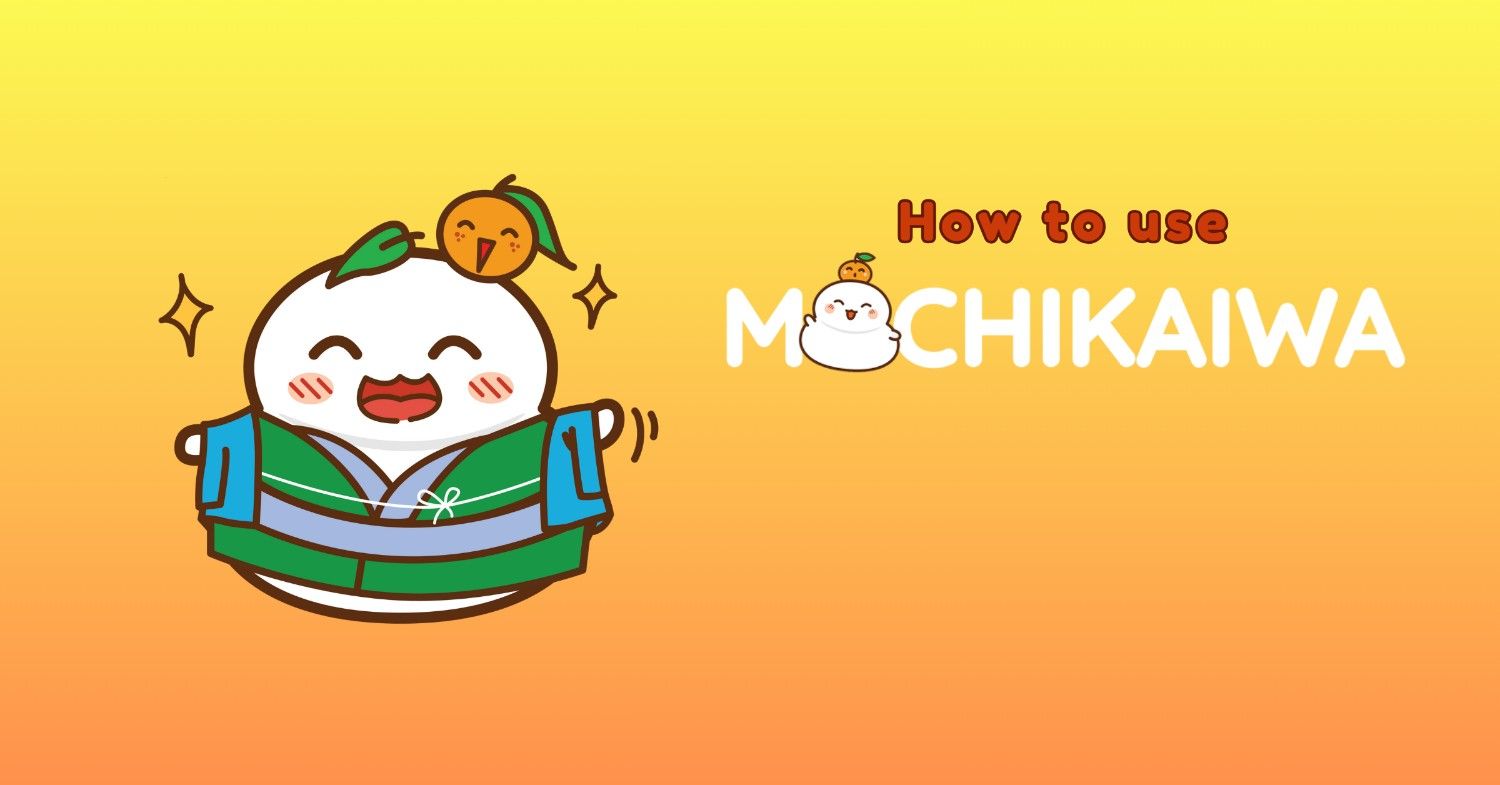Ever fumbled trying to greet someone in a new language? It can feel awkward, but trust me, mastering a simple “good morning” can go a long way. In Chinese culture, greetings are a big deal. They’re a way of showing respect, building connections, and setting the tone for an interaction.
Let’s face it, sometimes you just want to grab a delicious bowl of noodles without feeling like you’re giving a speech. That’s why this guide will equip you with 25 common Chinese greetings – enough to navigate most situations with confidence!
Table content
Why Greetings Matter in Chinese Culture
How to say Good Morning in Chinese
25 Common Chinese Greeting Sentences
Practical Application
Tips on pronunciation and tone accuracy
Conclusion
Additional Resources
Why Greetings Matter in Chinese Culture
Imagine walking into a crowded Beijing marketplace, bursting with vibrant sights and sounds. You spot a vendor selling the most incredible-looking dumplings you’ve ever seen. But how do you approach them? In China, a friendly greeting is your golden ticket to a delicious adventure (and maybe some bargaining power!).
Greetings are like little bridges that connect you to others. They show you care about social etiquette and open doors to communication. Whether you’re ordering food, asking for directions, or simply striking up a conversation, a well-placed greeting can make all the difference.
Here’s the good news: you don’t need to be fluent to make a great impression. This guide will break down 25 common Chinese greetings, so you can find the perfect one for any situation.
How to say Good Morning in Chinese
Let’s kick things off with the most important greeting of the day: “Good morning.” In Chinese, it’s 早上好 (zǎo shàng hǎo), pronounced “dzow-shang how.” It’s a versatile phrase you can use in most situations.
But wait, there’s more! Here are some variations depending on the context and your level of familiarity:
For Close Friends: 早啊 (zǎo a) – This is a casual way to say good morning to friends, literally meaning “early ah.”
Emphasizing the Morning: 今天早上好 (jīntiān zǎoshang hǎo) – This translates to “good morning today,” adding a little extra emphasis.
Formal Setting: 早上好,您早 (zǎo shàng hǎo, nín zǎo) – This is a more formal way to greet someone, with “您” (nín) being a respectful way to address someone like a teacher or colleague.
Now that you’ve mastered the art of morning greetings, let’s explore a wider range of greetings for different times of day and situations.
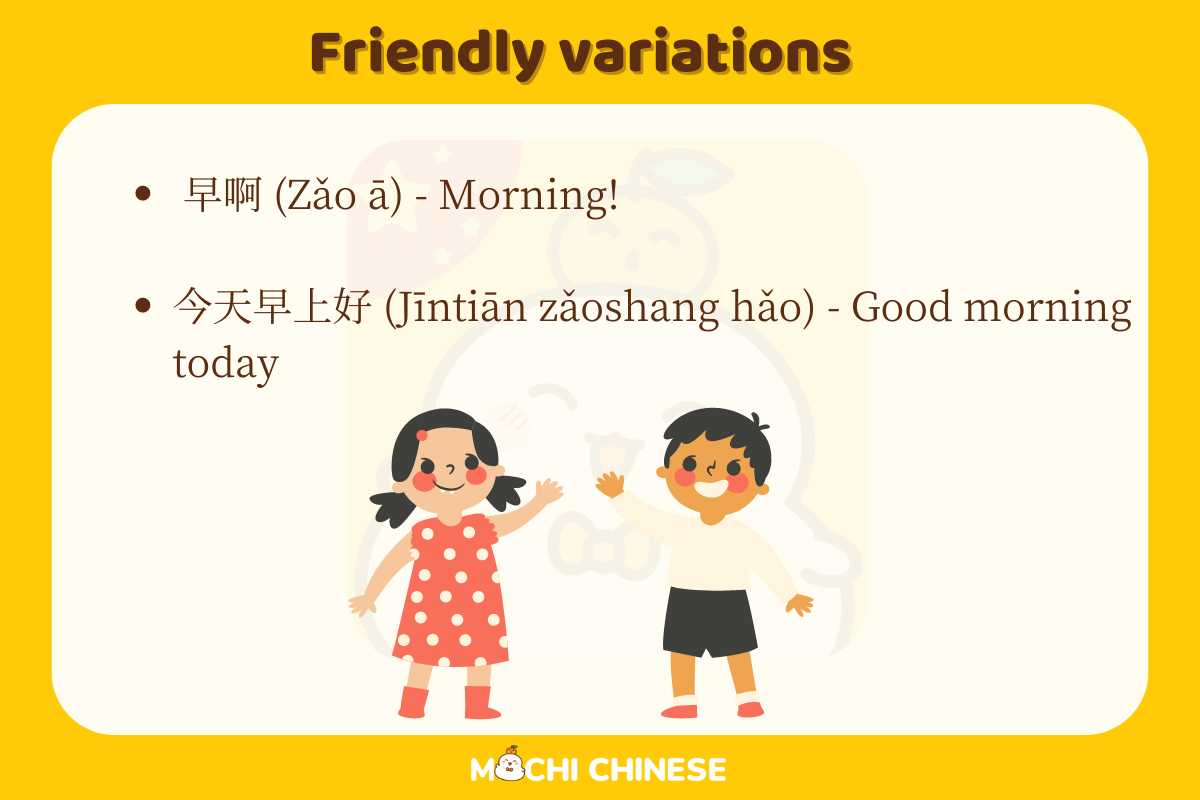
25 Common Chinese Greeting Sentences
Morning Greetings
Basic greetings
1. 早上好 (Zǎo shàng hǎo) – Good morning
2. 你早 (Nǐ zǎo) – Morning to you
Friendly variations
3. 早啊 (Zǎo ā) – Morning!
4. 今天早上好 (Jīntiān zǎoshang hǎo) – Good morning today
Formal greetings for professional settings
5. 早上好, 您早 (Zǎo shàng hǎo, nín zǎo) – Good morning, good morning to you
Daytime Greetings
General greetings
6. 下午好 (Xiàwǔ hǎo) – Good afternoon
7. 晚上好 (Wǎnshàng hǎo) – Good evening
Greetings specific to time of day
8. 吃了吗? (Chīle ma?) – Have you eaten? (During lunchtime)
Greetings on Meeting Someone for the First Time
9. 你好,我叫__ (Nǐ hǎo, wǒ jiào ___) – Hello, my name is ___
10. 很高兴认识你 (Hěn gāoxìng rènshi nǐ) – Nice to meet you
11. 请问,您贵姓? (Qǐngwèn, nín guìxìng?) – Excuse me, may I ask your surname?? (Formal)
Greetings for Different Social Contexts
Greetings for elders and respected persons
12. 您早, 您吃了吗? (Nín zǎo, nín chīle ma?) – Good morning, have you eaten?
Informal greetings among friends
13. 嘿, 在干嘛呢? (Hēi, zài gànmá ne?) – Hey, what are you up to?
Seasonal and Special Occasion Greetings
Festival greetings
14. 春节好 (Chūnjié hǎo) – Happy Spring Festival
15. 国庆节快乐 (Guóqìng jié kuàilè) – Happy National Day
Weather-related greetings
16. 天气不错啊! (Tiānqì bùcuò ā!) – The weather is nice!
Greetings on Leaving
17. 我先走了 (Wǒ xiān zǒule) – I’ll be going first
18. 失陪了 (Shīpéi le) – Excuse me for leaving (Formal)
19. 我们下次再见 (Wǒmen xià cì zài jiàn) – See you next time
Greetings with Inquiry
20. 最近好吗? (Zuìjìn hǎo ma?) – How have you been lately?
21. 一切都顺利吗? (Yīqiè dōu shùnlì ma?) – Is everything going well?
22. 这阵子在忙什么? (Zhè zhènzi zài máng shénme?) – What have you been busy with lately? (Informal)
Greetings with Well Wishes
23. 祝你周末愉快 (Zhù nǐ zhōumò yúkuài) – Have a happy weekend
24. 工作顺利 (Gōngzuò shùnlì) – All the best for your work
25. 学习进步 (Xuéxí jìnbù – Keep up the good work with your studies
Practical Application
Now that you’ve got a repertoire of greetings under your belt, it’s time to put them into practice. Pronunciation and tone are crucial in Chinese, so listen closely and mimic native speakers to hone your skills. Remember, the nuances of when and how to use different greetings can vary, so observe and learn from the cultural context around you.
Tips on pronunciation and tone accuracy
When saying “早上好” (Zǎo shàng hǎo), pay attention to the rising tone on “早” (Zǎo) and the falling tone on “好” (Hǎo). Practice saying it slowly at first, then gradually speed up while maintaining clarity and accuracy.
Cultural tips on when and how to use different greetings
In Chinese culture, greetings are more than just words; they’re a reflection of respect, hierarchy, and social harmony. Use formal greetings like “早上好, 您早” (Zǎo shàng hǎo, nín zǎo) in professional settings or when addressing elders. Save casual greetings like “嘿, 在干嘛呢?” (Hēi, zài gànmá ne?) for friends and peers.
Encouragement to practice these greetings in daily life to enhance fluency
Don’t be shy about practising your newfound greetings in everyday interactions. Whether it’s with your Chinese-speaking friends, colleagues, or even just the cashier at your local Chinese restaurant, every opportunity is a chance to improve your fluency and deepen your cultural understanding.
Conclusion
In Chinese culture, greetings are more than just words; they’re a cornerstone of communication and social etiquette. By mastering a variety of greetings, you’re not only showing respect and courtesy but also forging connections and bridging cultural divides. So, keep practising, keep learning, and above all, keep spreading goodwill with every “早上好” (Zǎo shàng hǎo) and “你好” (Nǐ hǎo).
Additional Resources
Looking to dive deeper into the world of Chinese language and culture? Here are some recommended resources to fuel your learning journey:
Recommended apps and websites for further learning
– Mochi Chinese: A popular language-learning app offering Chinese vocabulary at various proficiency levels.
– FluentU: An immersive platform that uses real-world videos to teach Chinese in context.
Information about Chinese language courses and books
– “Integrated Chinese” by Yuehua Liu et al.: A comprehensive textbook series widely used in Chinese language courses.
– Confucius Institute: A global network of cultural institutions offering Chinese language courses and cultural programs.
– Mandarin Blueprint: An online platform offering structured courses and resources for learning Mandarin Chinese.

